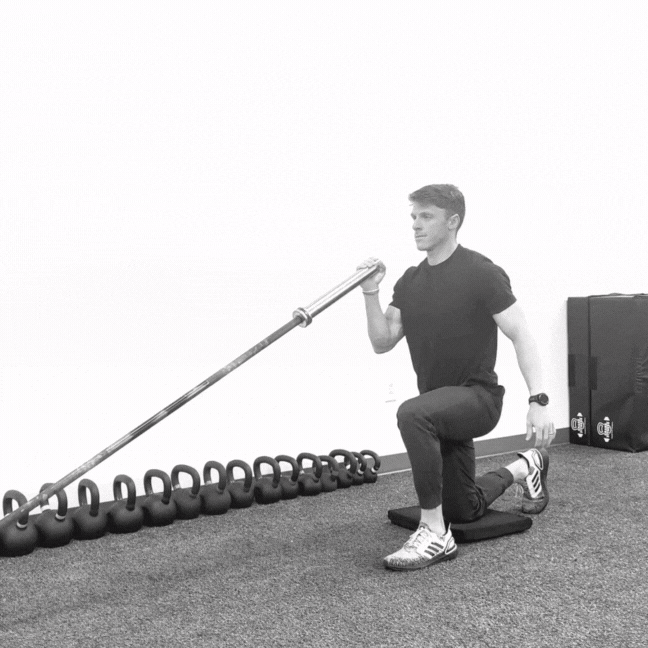Smart Push Movements
April 25, 2024
Primal Movements Series: Push
Let’s dive a little deeper into our primal movement patterns starting with push! As a reminder from our last Move highlight, push movements are upper body movements that you would typically do on chest and triceps day in the gym. All of our primal movements will have many levels of progression. That being said, we always want to start with the most simple and stable variation giving us the greatest chance of success. As you master the movements, you can begin to progress to more complex, less stable movements.

The Dumbell Flat Bench Press is an example of a Horizontal Push Movement.

The Half Kneeling Landmine Press is an example of a Vertical Push Movement.
The upper body movement patterns have an added layer of complexity considering they can be further separated into vertical and horizontal movements. Horizontal pushing is represented by pushing your arms straight away from you. Examples (from least to most difficult) are push ups, cable press, and bench press. Vertical pushing is represented by pushing your arms straight above your head. Examples (from least to most difficult) are machine shoulder press, dumbbell shoulder press, and horizontal press.
The value of strength in pushing is extremely evident when we start to think of it as broken down above. We need strength in pushing musculature to push ourselves up from the ground whether we’re there on purpose or not. Strong push muscles are also vital for lifting a child overhead to a suitcase into an overhead compartment. Regardless of your age, vocation, or hobbies, there is something in your life that you need push strength to perform.
What happens when we overtrain push movements?
We have discussed the importance of all 5 primal movements as a part of a total body strength training program. That being said, the push movements are often over-emphasized. Especially in a world where everything happens in front of us, forcing the posture of our neck and shoulders forward. This posture will shorten many of the muscles we use for pushing including the pecs and upper traps. Strength training them without appropriately training the musculature on your back with pulling movements can contribute to this postural imbalance potentially leading to neck and shoulder pain.
Leave a Reply Cancel reply
quick links
Schedule an Appointment
Meet the Team
Performance Services
Rehab Services
Patient Testimonials
FAQ
Free phone consultation.
GET STARTED